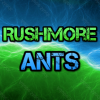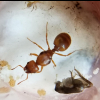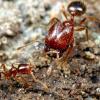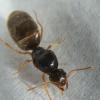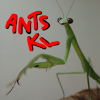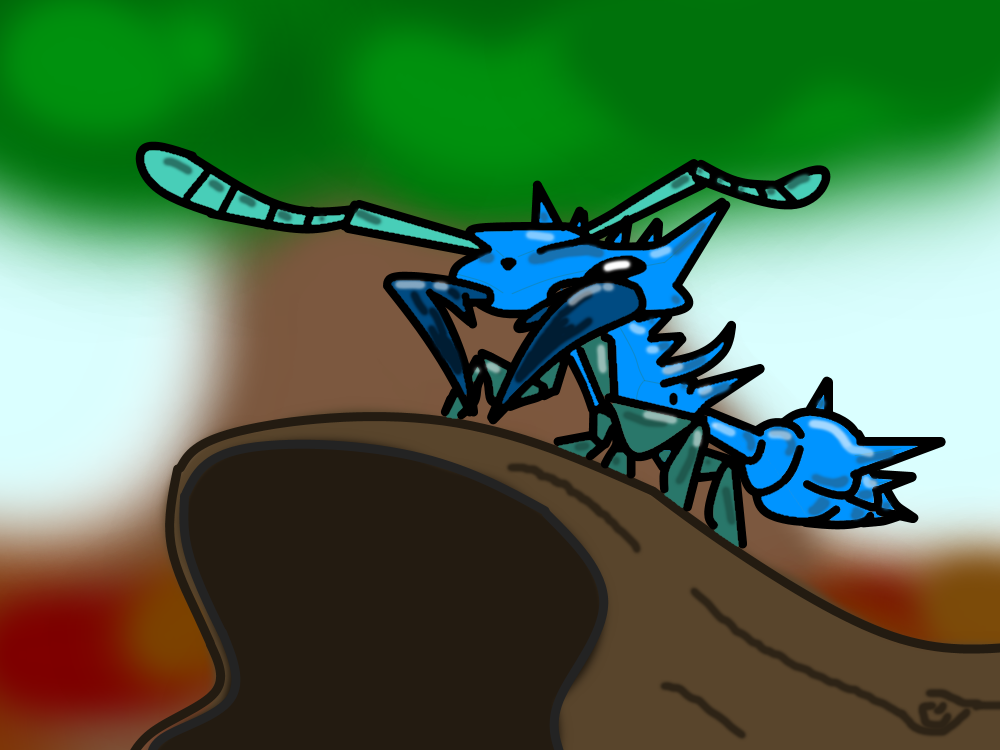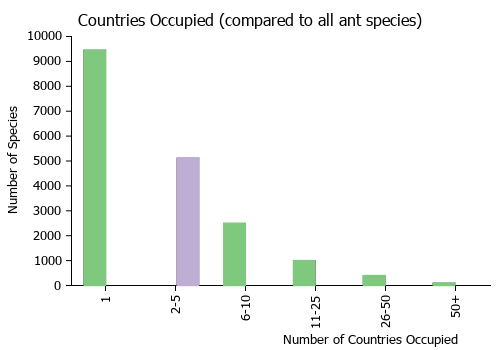Odontomachus jejuensis
Odontomachus jejuensis is a species of ant in the subfamily Ponerinae. It is a tramp species, originating on the sub-tropical Korean island of Jeju, and has since spread worldwide.
Distribution
This species was the dominant ant species on the South Korean island province of Jeju for several thousand years. At around 1200, certain colonies formed a genetic mutation which allowed polygyne. This mutation allowed these colonies and their descendents to outcompete the monogynous majority throughout the island. By 1700, they had developed a strict gyne caste system, see below in 'Biology'. In the 1700s, once this caste system had developed, the ants were exported to the Korean mainland. Of course surviving winter was difficult for them, yet after about 50 years of barely hanging on, they adapted, and became a temperate species, and thrive in cold and warm climates alike. They then spread across Korea and into China and Japan, and in the mid 1800s were exported to the United States and beyond. Their presence in the US has been minimal until now, as they are finally gaining significant footing in many areas of the US.
Biology
Caste system
There are two distinct castes of queens, officially known as 'macrogynes' and 'microgynes', commonly called 'alpha queens' and 'beta queens'. Alpha queens are larger, at around 10 mm, and are strictly monogynous towards other alpha queens, yet will definitely tolerate many beta queens, which are highly polygynous. To put it simply, a single colony has 1 alpha and many betas. Alpha queens are also much more productive than beta queens. Beta queens are around 7-8 mm, and do much work around the colony. Colonies can grow up to 3,000 workers due to this polygynous system.
Workers are 4-7 mm, and have very complex social structures. For example, like in other Odontomachus, workers establish a strict hierarchy system, in which workers compete for dominance. Workers can be promoted or demoted in rank during competitions with other workers. Usually the oldest workers are more dominant, while being quite large can be of an advantage as well.
However, workers aren't all about dominance. They go beyond the normal system, and actually create friend groups, in which many workers which like each other will oftentimes perform activities together, and compete with rival groups. Workers have individual pheromones which distinguish them, as they are primitive ants. Individual workers can also decide that they don't particularly care for one another, and therefore memorize workers which they will pick a fight with whenever they're around each other. Fighting between individuals or friend groups or for dominance usually consists of workers tugging on limbs and locking mandibles in a show of strength. Actual aggressive behavior against rival colonies and prey/predators involves actually jaw-snapping and stinging.
Foraging habits
Workers will often tandem run while foraging. Friend groups will oftentimes forage together, with the most dominant worker leading them. Workers have the ability to spring forwards at their food, and will use their jaws to spring backwards and bite at the same time. However, these ants also appreciate flower nectar as well as insects. Since these colonies are primitive and don't grow as large as most native species, they don't consume an amount of resources which is threatening to an ecosystem.
Territorialism
They are very territorial, however they ignore most native species and let them have all the food and space they need, as they concentrate most of their territorialism on rival colonies of the same species. But large, mature native colonies which are a threat to their colony are oftentimes attacked. Usually these colonies are over 10,000 workers, and the O. jejuensis colony can feel that it's being outcompeted for resources. If this occurs, at least half the colony will storm the enemy nest, as these workers are vastly superior to most natives in terms of weaponry and the thickness of the exoskeleton. They will eat many of the workers and brood, yet they rarely kill the colony, just weaken it enough so that they can get enough food for themselves. When invading the Korean mainland, they took a particular dislike to Tetramorium tsushimae and it's tyraneously dominant tendencies. Therefore they adapted by actively attacking Tetramorium colonies, making them beneficial in America, as they destroy or weaken Tetramorium colonies and help reestablish a native balance.
Colonies will also compete with rival colonies, with battles that make Tetramorium wars look like tea parties. The worker who can bite another usually wins, as the trap-jaw splits the other worker in at least two pieces. Stingers are also used during fighting. Human spectators to these wars often note that it's not just bodies that are scattered across the battlefield, but individual limbs, heads, mesosomas, and gasters. The defeated colony will be stripped of its brood, it's alpha queen killed, and the beta queens are dragged back to the victor's nest and become part of their colony. All workers are slaughtered, except for the callows.
Nesting habits
Colonies will dig deep nests, usually no more than 6 inches in diameter, yet can be up to 8 feet deep in mature colonies. These ants prefer open areas, like their natural habitat on Jeju Island, and thus do well in suburban and urban environments (besides, there's plenty of Tetramorium to eat  ).
).
Nuptial flights & colony founding
Nuptial flights occur in early May if weather permits. Beta queens mate with one male each, while alpha queens mate with many males. Alpha queens release pheromones which attract beta queens. Once the alpha queen has both mated and collected enough beta queens (at least 5), they tandem run in search of a nesting site. Once found, they will dig a shallow claustral cell. The alpha queen will usually stay in the nest while the beta queens forage for food. The alpha queen assists with brood tending somewhat, yet the beta queens still do most of the work. 10-20 nanitics is common. Egg to worker usually takes 10-12 months, as workers are extremely well built, and can live from 4-6 years. It usually takes 5 years for a colony to reach a mature size, i.e. exceeding 1,000 workers. It is then they start producing all forms of alates.



